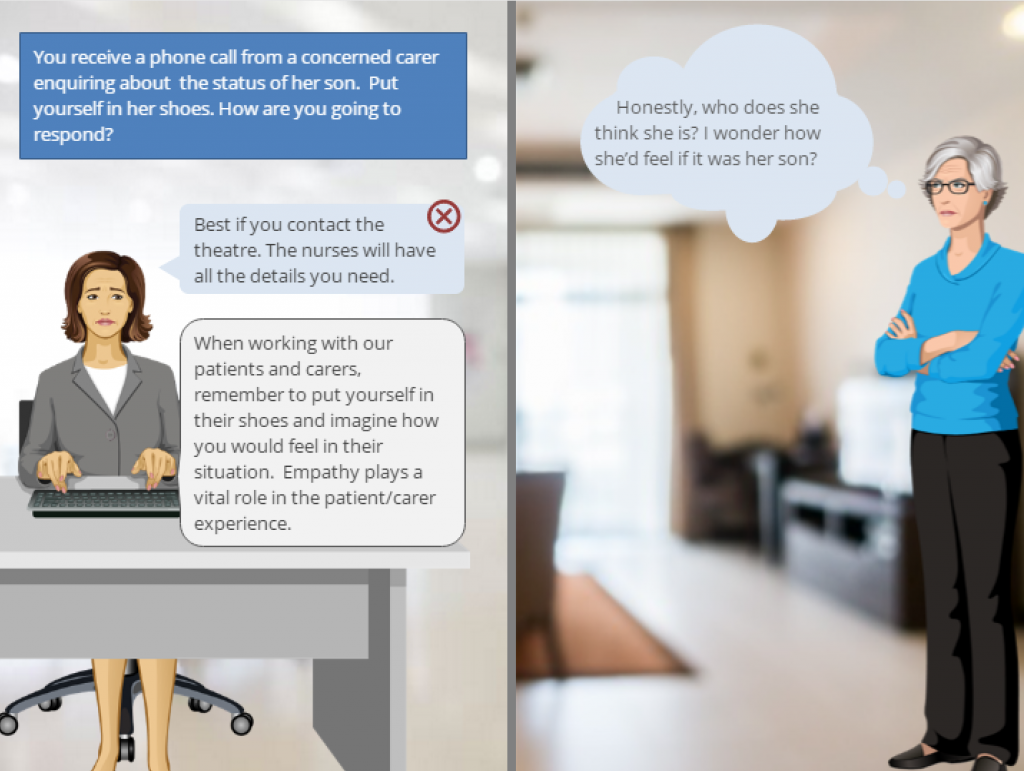
Want to achieve better business and learner outcomes? An experiential scenarios approach is what you might be looking for.
Many learning modules and programs push the information to the learner. Despite an engaging design, how much information is actually retained? Can the knowledge be put into practice on the job? Pulling the knowledge from your learners by placing them into the real-life context and having them make decisions within a given situation is one way for them to retain the information and to also practice the required skills.
What is scenario based learning?
It’s about giving your learners the opportunity to explore, learn and acquire experience and skills within a safe environment, without harming your organisation’s brand. Scenarios aim to involve and engage by having learners actively participate – they are presented with a situation, they’re asked to make a decision and they witness the consequences of their actions.
Here’s an example of a simple scenario flow:
We can use experiential scenarios to incite behavioural change, to practice conversations with customers, and to discover how to use systems and follow procedural processes. For example, a learner decision point or challenge might involve asking the learner to demonstrate the best way of empathising with their customer’s situation (behavioural change is the focus here).
How does the learner know if they empathised with the customer? It could be through feedback such as the customer abruptly ending the phone call and, also showing a cranky facial expression, a visual scoring metric such as a KPI indicator displayed, or through feedback, such as text or audio indicating why the choice was or wasn’t the best and how to approach the situation differently next time.
Tips for creating experiential scenarios
- Identify a realistic situation that will lend itself to covering key topics within the content.
- Try to include decision points/challenges that will help the scenario to develop, i.e. the choice naturally flows onto to another choice.
- When writing your choices, try not to make the best practice and least ideal choice too obviously correct or incorrect, as you want to provide the learner with a degree of challenge.
- When writing feedback, consider including the consequences of the chosen choice, so the learner understands the impact of their decision and can apply this when on the job.
Here’s an example of a challenge screen:
Here’s an example of a feedback/consequence screen:
Going back to the initial question posed in this blog, ‘Want to achieve better business and learner outcomes?’ Scenario based learning enables learners to draw upon real life experience. Information provided through a contextual setting, enables learners to commit the knowledge and skill not only to their working memory, but also to their long-term memory.
Find out more in our blog “How to Immerse Learners with Realistic Scenarios“



